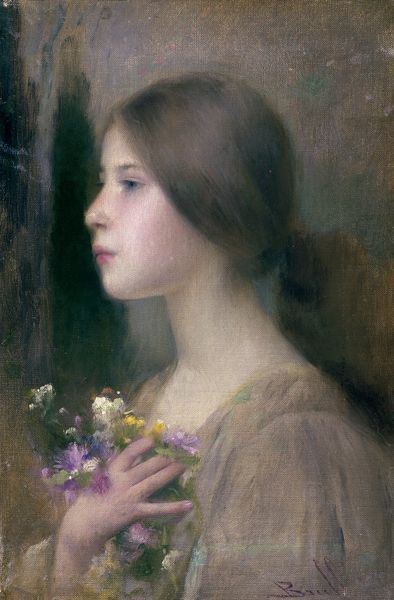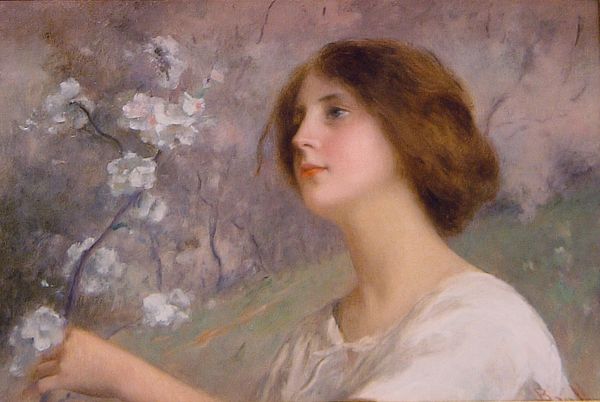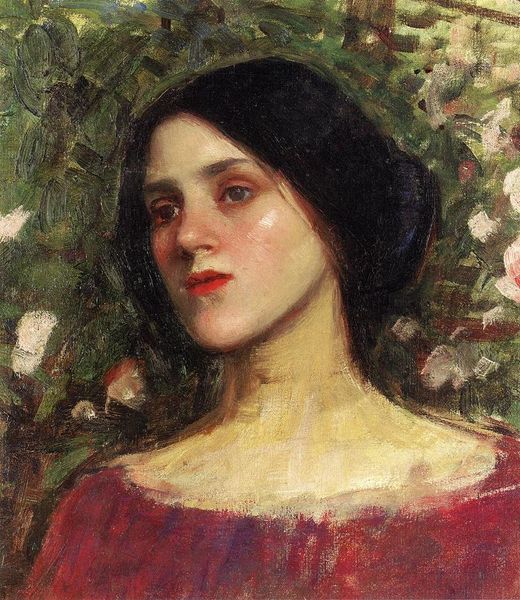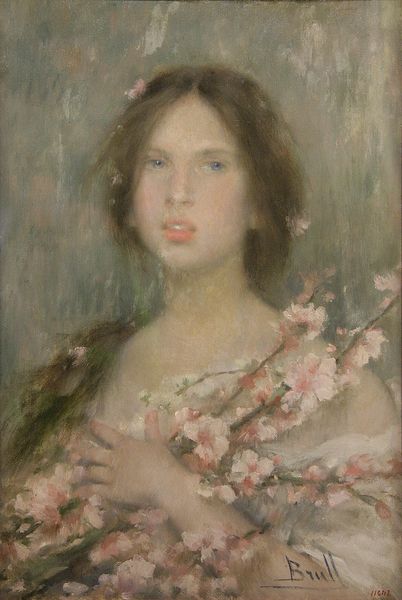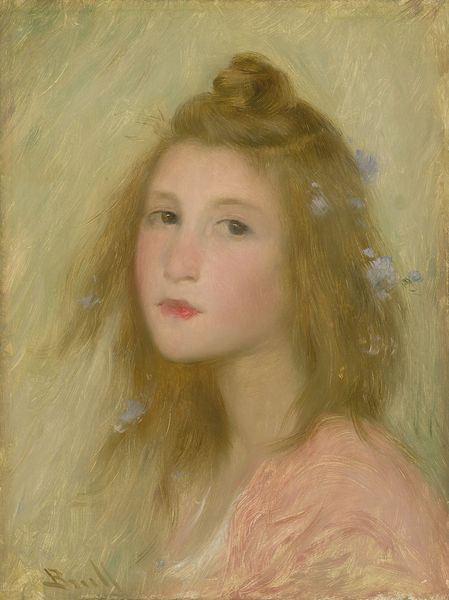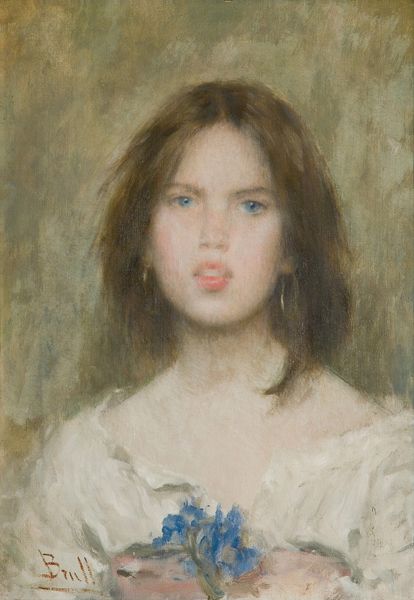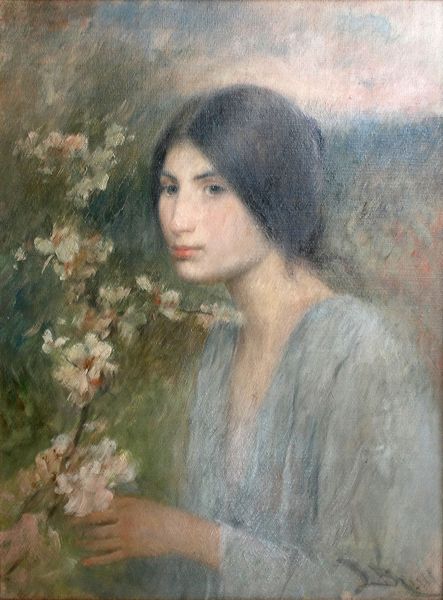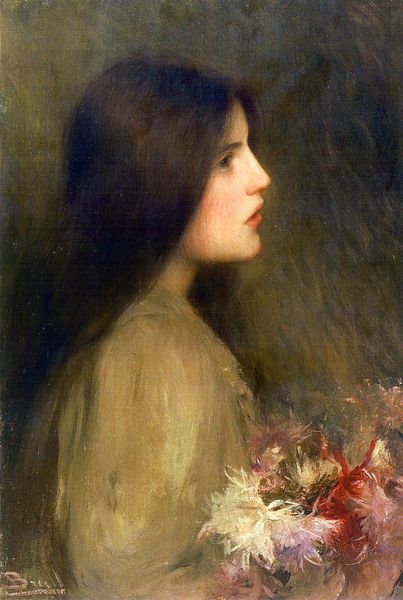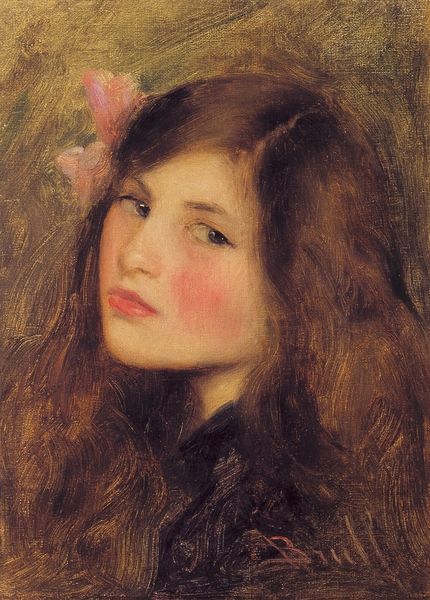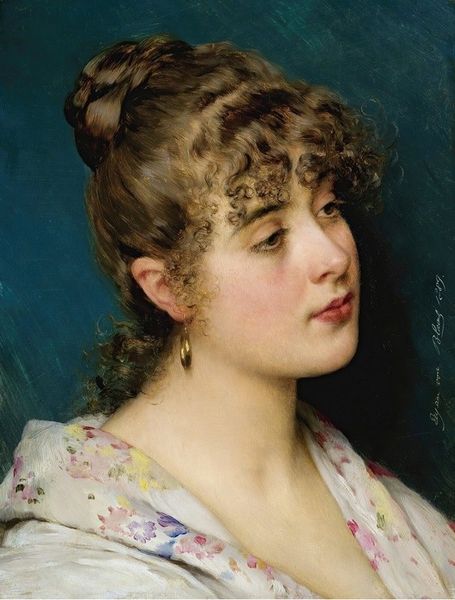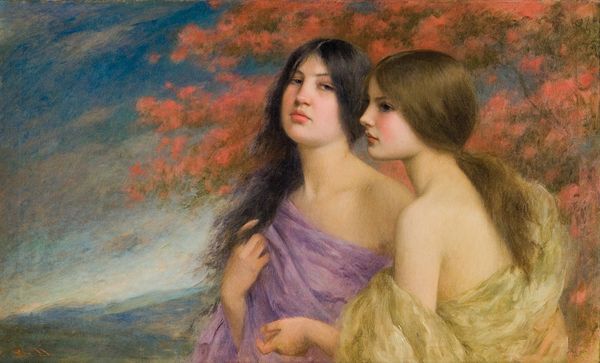
painting, oil-paint
#
portrait
#
painting
#
oil-paint
#
intimism
#
romanticism
Copyright: Public domain
Editor: We’re looking at “Woman” by Joan Brull. It’s an oil painting, a dreamy portrait. The brushstrokes seem so soft. How would you approach discussing this artwork? Curator: Well, let's start with the materiality. The application of oil paint here isn’t about illusionism; it's about texture, about calling attention to its own creation. Notice how the brushstrokes don’t disappear into smooth skin; they build form. It draws attention to the act of making itself. Why do you think Brull made that choice? Editor: Maybe he wanted to show the labor, the physical process, and push back against this idea of art being…effortless? Curator: Precisely! It acknowledges the artist's hand, a conscious decision regarding labor. Consider the social context: who were the consumers of art like this, and what did that say about them? Where and how was this painting displayed, who did he expect to see this? Editor: Probably wealthy patrons, maybe in their homes. So, he's producing art for a specific class, showcasing the kind of romantic, idealized beauty they favored. Curator: Yes, and this idealized beauty masks other types of labour – of models, assistants, perhaps even the unseen labour required to generate the wealth to support such artistic production. Editor: I didn't even think of that. So, even this delicate portrait has layers connected to labor and consumption. It changes how I see it now, knowing the hands that created it and the system supporting its creation. Curator: Exactly. It’s not just an image, but a record of material choices and social structures. That consideration can transform our viewing experience.
Comments
No comments
Be the first to comment and join the conversation on the ultimate creative platform.

